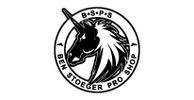How to use the Fifty Case Gauge by Shockbottle
Below are detailed instructions for properly using the 50-Round 9mm Luger Chamber Checker/Cartridge Case Gauge by Shockbottle:
Before You Begin
- Clean and Inspect: Check that the chamber checker is free of dirt, debris, or residue. A quick wipe with a clean, lint-free cloth is typically sufficient.
- Adequate Lighting: Make sure you have good lighting so you can easily see any rounds that are out of spec.
Step-by-Step Instructions
-
Load the Checker:
- Place the 50-round chamber checker on a flat, stable surface.
- Gently drop each 9mm Luger round, bullet-first, into the holes. Each cartridge should slide in easily without being forced. Fill all 50 holes or as many as needed for your current batch.
-
Check for Proper Fit:
- Inspect the rounds from a side angle. Each cartridge’s base should sit flush or slightly below the top surface of the checker.
- If any round protrudes above the surface, it may be improperly sized, have a bulged case, a high primer, or other dimensional issues.
-
Identify and Remove Out-of-Spec Rounds:
- Any round that does not sit flush should be set aside.
- Re-check these problem rounds with calipers, resize if possible, or disassemble and correct the issue before use.
-
Unload the Checker:
- To remove your verified rounds, carefully invert the checker over a soft, clean surface or a reloading tray.
- Lightly tap or shake the unit. Properly sized rounds will drop out with minimal effort.
- If a cartridge sticks, do not force it; inspect and address the underlying problem.
-
Store or Package Your Ammo:
- After removing the properly sized rounds, box them up or prepare them for transport or immediate use at the range.
Care and Maintenance
- Regular Cleaning: Periodically clean the checker with a soft brush and mild solvent if needed. Dry thoroughly before storage.
- Handle Gently: Avoid dropping or striking the unit, as impacts may affect its dimensional accuracy.
By following these guidelines, you will ensure that each checked round is properly dimensioned, reducing potential feeding and chambering issues in your firearm.
